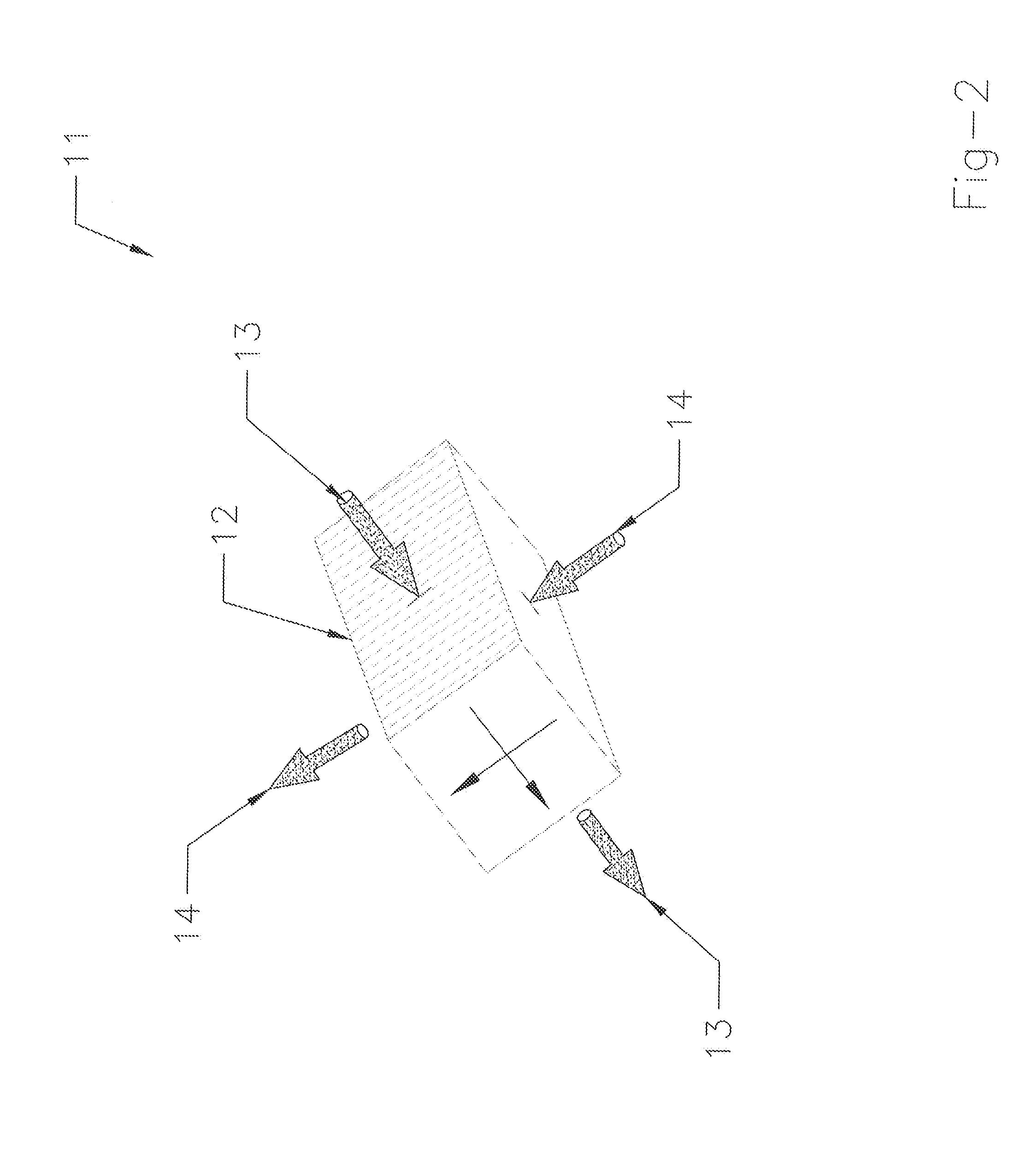Climate Control System for Data Center
a data center and climate control technology, applied in the field of data center climate control systems, can solve the problems of air leakage between primary and secondary air streams, rotary heat wheels, and high cost of mechanical climate control systems relying solely on refrigerant or liquid cooling, so as to prevent mixing or cross contamination, prevent the transfer of harmful contaminates, and eliminate leakage
- Summary
- Abstract
- Description
- Claims
- Application Information
AI Technical Summary
Benefits of technology
Problems solved by technology
Method used
Image
Examples
Embodiment Construction
[0027]Referring to FIG. 1, the prior art heat wheel type air-to-air heat exchanger 1 transfers heat generated by a climate-controlled data center space 8 to an outside air stream (OAS) 2 exhausting to ambient 3. The heat wheel 9 rotates, by means of a motor 10, through a partition between a primary air flow, consisting of the recirculating air stream (RAS) 56, and a secondary air flow, consisting of the OAS 23. The RAS consists of a warm return air stream 5 and a conditioned supply air stream 6. The OAS consists of an intake air stream 2 and an exhaust air stream 3. Fans 7A 7B generate pressure to move the primary and secondary air flows through the perforated heat wheel 9. Leakage across the partition 4 between the primary and secondary air flows reduces the heat transfer efficiency of this type of system. The fan position in the system is therefore critical, which limits flexibility of system design for this embodiment.
[0028]Referring to FIG. 2, the present invention replaces the ...
PUM
 Login to View More
Login to View More Abstract
Description
Claims
Application Information
 Login to View More
Login to View More - R&D
- Intellectual Property
- Life Sciences
- Materials
- Tech Scout
- Unparalleled Data Quality
- Higher Quality Content
- 60% Fewer Hallucinations
Browse by: Latest US Patents, China's latest patents, Technical Efficacy Thesaurus, Application Domain, Technology Topic, Popular Technical Reports.
© 2025 PatSnap. All rights reserved.Legal|Privacy policy|Modern Slavery Act Transparency Statement|Sitemap|About US| Contact US: help@patsnap.com



